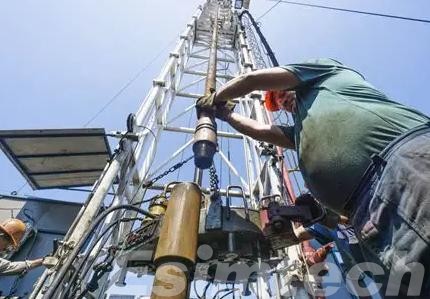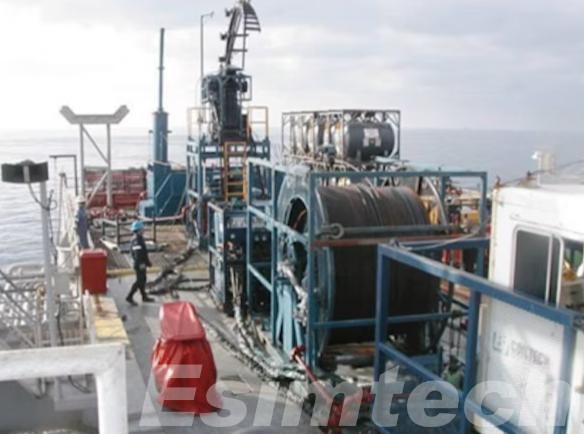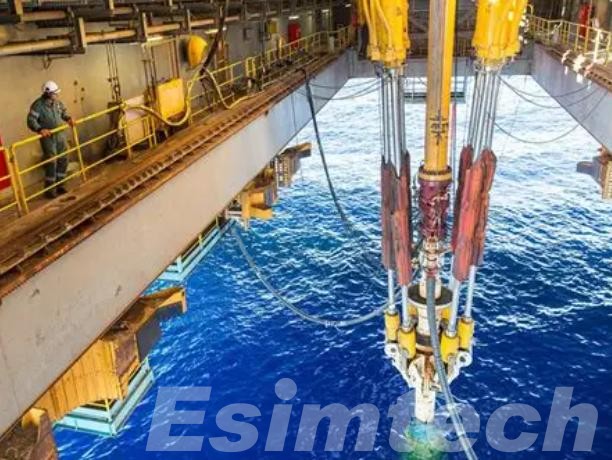Coiled Tubing vs. Rotary Drilling: Which Wins in Deepwater Operations
Deepwater drilling operations need advanced technologies to maximize efficiency, safety, and cost-effectiveness. Two of the most prominent methods—coiled tubing drilling and rotary drilling—are widely practiced, but which one is best to use in deepwater operations? This article is an analysis of their contrasts, advantages, and suitability for offshore drilling.
What is Coiled Tubing Drilling

Coiled tubing drilling (CTD) is a new drilling technique that uses a continuous, flexible steel pipe that is stored on a large reel, unlike traditional jointed drill pipes. Operated on a special coil tubing drilling rig, the method allows for faster, more efficient operations with less downtime.
Some of the key characteristics of coiled tubing drilling include:
- Continuous Operation – Does not necessitate stopping and making connections between pipe joints, allowing continuous drilling and tripping.
- Improved Accuracy – Ideal for re-entry operations, underbalanced drilling, and well interventions due to better pressure control.
- Smaller Footprint – The coil tubing drilling rig is smaller, making it ideal for offshore platforms where space is limited.
- Less Risk – Coiled tubing’s flexibility lessens the risk of pipe sticking in complex wellbores.
This technique excels in deepwater conditions where efficiency and wellbore access are paramount. Although it is depth-limited when compared to rotary drilling, its maneuverability and speed render it an excellent option for precision drilling scenarios.
What is Rotary Drilling?

Rotary drilling is the most prevalent and longest-standing oil and gas well drilling method, especially in deepwater environments. It employs stiff, connected drill pipes that are turned to rotate a drill bit at the end of the wellbore. The drilling rig rotates using a rotary table or top drive system. As the bit is cutting into the rock, drilling fluid, or just “mud”, is circulated downward through the drill pipes and upward through the annulus external to the drill pipe and internal to the wellbore. The fluid oils the bit, carries cuttings up to the surface, and builds pressure in the wellbore to prevent blowouts.
Rotary drilling is strong and will endure hard formations and critical depths, making it the most desirable method for most primary drilling work, including deepwater wells with accuracy and reliability under high-pressure and high-temperature environments.
Key Differences Between Coiled Tubing Drilling and Rotary Drilling
Coiled Tubing Drilling (CTD) and Rotary Drilling are fundamentally two distinct techniques, with specialized equipment, working process, and usage—most significantly in deepwater drilling.
- Coiled Tubing Drilling uses a continuous, flexible steel tube that is coiled on a gigantic spool and pumped down the wellbore without the need for pipe connection. It therefore facilitates quicker tripping (running in and out of the hole) and smoother operation. Downhole motor-driven drill bit at the tip of coiled tubing is energized by drilling fluids injected via the tubing. CTD finds optimal application in well interventions, sidetracking, and underbalanced drilling where well pressure must be maintained. CTD is nonetheless limited in both weight and torque application on the drill bit and thus finds less use in hard rock or full-depth drilling.
- Rotary Drilling utilizes rigid drill pipes that are coupled section-wise. They are spun on the surface through a top drive system or a rotary table, and they pass high weight and torque to the drill bit, which is excellent for hard formation drilling and at greater depths. Drilling fluid circulates through the drill string to cool the bit, carry away the cuttings, and give wellbore stability. Rotary drilling is slower for pipe makeup while tripping but has higher mechanical strength and free tool selection ability, and therefore it is now the preferred first choice for initial deepwater well construction.
| Feature | Coiled Tubing Drilling | Rotary Drilling |
| Pipe Type | Continuous flexible tubing | Rigid drill pipes connected in sections |
| Connection Time | No connections needed, faster tripping | Frequent pipe connections required, slower tripping |
| Torque & Weight on Bit | Limited torque and weight | High torque and weight capabilities |
| Well Intervention | Ideal for live well interventions | Usually requires well shut-in |
| Depth Capability | Generally shallower, limited by tubing strength | Suitable for very deep wells |
| Footprint on Rig | Smaller surface equipment | Larger drilling rig setup |
| Operational Flexibility | Excellent for sidetracks and underbalanced drilling | Better for primary, full-depth drilling |
| Suitability for Hard Formations | Less effective | Highly effective |
Understanding these differences helps operators choose the best drilling method based on project needs, formation challenges, and operational goals.
Advantages of Coiled Tubing Drilling in Deepwater Operations

Coiled Tubing Drilling possesses various advantages that make it an optimum response to the deepwater dilemma.
- It includes the efficiency of operations as one of its main benefits. Because coiled tubing is a tubular form, it eliminates the need to make repeated pipe connections, significantly minimizing the level of tripping time in and out of the well. Such a faster cycle time lowers total drilling expense and improves project schedules.
- A further important advantage is CTD’s ability to perform live well interventions without closing into the well. Preservation of well pressure during operations is critical in deepwater environments, where control of the well is harder and more costly. CTD allows operators to work safely and effectively on producing wells, minimizing non-productive time and maximizing production uptime.
- Besides, the CTD systems also have a smaller surface footprint compared to traditional rotary rigs. The compact equipment size is especially useful on deepwater vessels and platforms, where space and weight are restricted. Logistics and mobilization are also simplified by the smaller equipment size.
- Lastly, coiled tubing is ideally suited for underbalanced drilling and precision operations like sidetracks and well cleanouts. These capabilities maintain reservoir integrity and improve well productivity and therefore render CTD an economical and multifaceted solution in deepwater drilling.
Strength of Rotary Drilling in Deepwater Operations
Rotary drilling remains the pillar of deepwater drilling operations due to its proven reliability and ruggedness.
- Rotary drilling’s biggest strength is that it can apply high torque and heavy weight to the drill bit, making it easy to bore hard rock layers and reach maximum depths typical of deepwater wells. Mechanical robustness of rotary drilling qualifies it for primary well construction where penetration of hard geologic layers is a necessity.
- Another major advantage is the flexibility of rotary drilling with downhole tools and equipment. The system can receive a variety of different drill bits, measurement-while-drilling (MWD), and logging-while-drilling (LWD) technology, providing essential information in real-time to optimize drilling efficiency and maintain wellbore integrity. This aspect is crucial in managing the complex pressures and temperatures of deepwater environments.

- Rotary drilling is also better at dealing with high-pressure, high-temperature (HPHT) environments, which are common problems in ultra-deepwater wells. Its robust construction offers efficient and safe drilling in such hostile environments, which reduces well control accidents.
Generally, rotary drilling’s benefit is that it can provide robust, consistent, and adaptable drilling performance, and thus the first choice in deepwater well exploration and building.
Which Method is Better in Deepwater Operations?
The choice between Coiled Tubing Drilling and Rotary Drilling in deepwater operations is largely dependent on the project goals and operational requirements. In new well primary drilling, especially in hard rock and at very great depths, Rotary Drilling remains the superior option due to its higher torque, greater weight-on-bit capability, and proven flexibility in challenging geological formations. It is the workhorse for full-depth well drilling in deepwater environments.
On the other hand, Coiled Tubing Drilling has the upper hand in well interventions, sidetracks, and re-entry target operations. As it is able to perform live well operations, minimize downtime, and has a smaller equipment footprint, it is highly economical and effective in such applications.
In practice, deepwater drilling activities often use both methods—rotary drilling for the well initial establishment and coiled tubing for subsequent maintenance and optimization—leveraging the respective strengths of the two to maximize safety, efficiency, and return on investment.

While coiled tubing drilling is fast and efficient, rotary drilling remains the option for hard formations and ultimate depth. In deepwater drilling, a hybrid approach—mating the two technologies in regions where each possesses its maximum advantage—may be the optimal approach.
